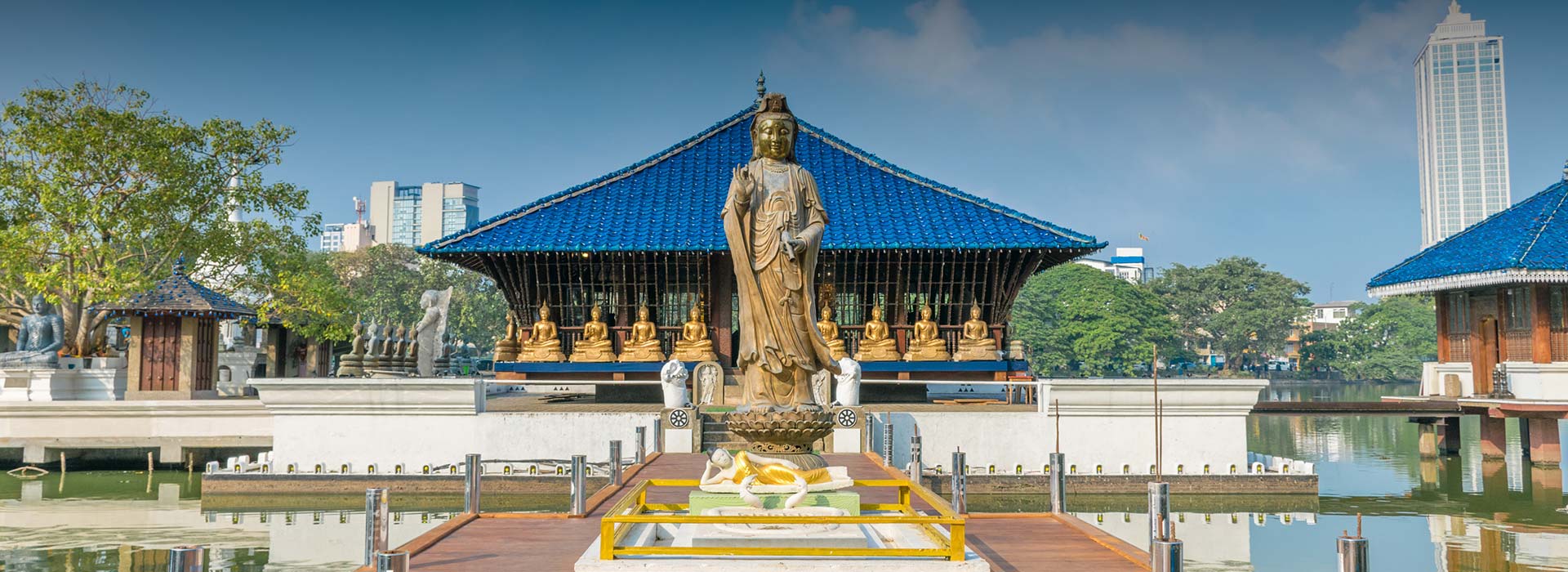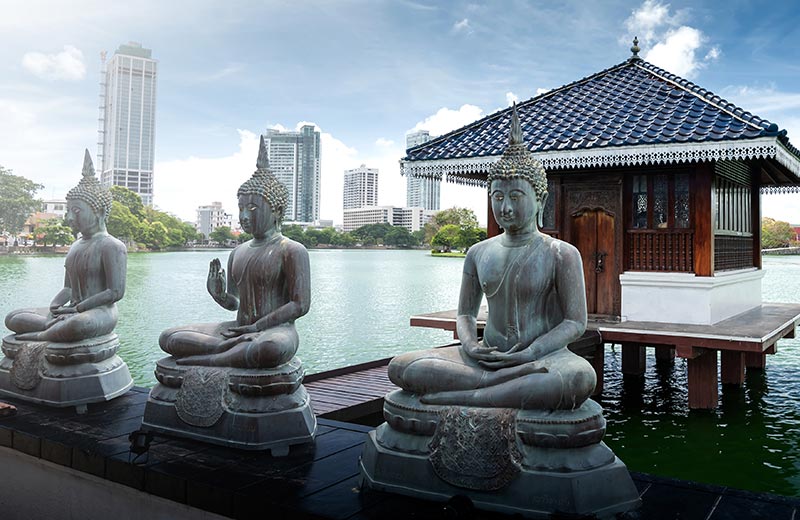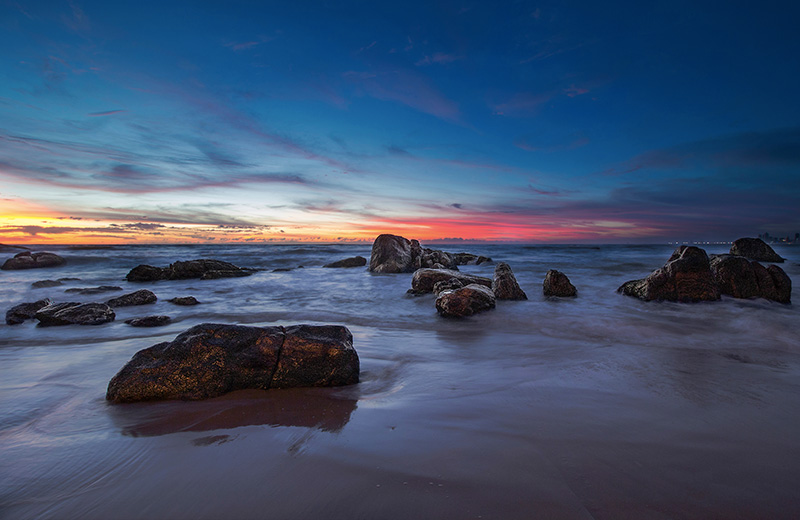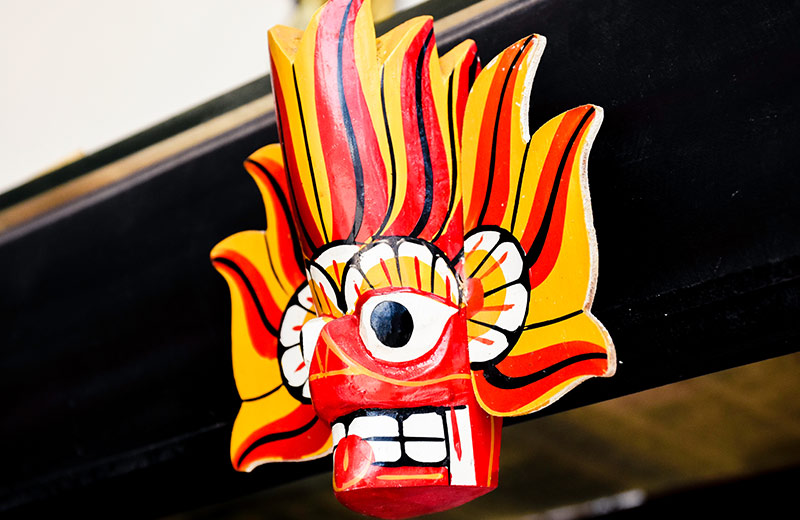Four Religions & Four Places of Worship: A Day Tour of Colombo
Everyone in Colombo is always on the go. The streets of the bustling city are bursting at the seams with action; tuk-tuks whiz by frantically trying to dodge the traffic jam ahead of them, the Pettah market is full of vendors speaking loudly while customers are trying their best to haggle, buses zoom past with no care in the world for road rules, and school children – who stand out against all the colour and commotion in their all-white uniforms – laugh in a corner.
Yes, Sri Lanka’s commercial capital is certainly overflowing with life, sound and colour. However, amidst all this commotion, you can still find pockets of peace, places where time seems to slow down and where you can hear your own thoughts. Explore four places of worship in Colombo, each one belonging to one of the country’s main faiths and each one a quiet oasis in the city.
Seema Malayaka Shrine
A stone’s throw away from the iconic Gangaramaya temple, you will find the Seema Malakaya Shrine, a beautiful Buddhist shrine and meditation pavilion that is affiliated with the temple. There is a gentle breeze and the lingering smell of incense at this tranquil shrine which sits on stilts as it hovers the olive-green Beira Lake. Seema Malakaya was designed by the pioneer of Tropical Modernism, Geoffrey Bawa, and the outside of the pavilion is lined with gold Buddha statues which were gifts from China and Japan.
The best time to visit the shrine is close to sunset, as the whole of Colombo is cast in a golden hue and the sunlight reflects off these golden Buddha statues making them shine even brighter. While you stand here the distant traffic sounds are drowned out by the rustling leaves of the shrine’s Bodhi tree.
Jami Ul-Alfar Mosque
Found in the heart of the crowded streets of Pettah, this candy cane striped mosque solemnly rises above all the action below. The Jami Ul-Alfar Mosque is one of Colombo’s grandest mosques; built in 1908, the architecture has a vaguely European feel to it and loosely resembles a Gothic or Neo-Classical church. This mosque is unlike most mosques in the country as you can actually enter and wander around the premises.
As soon as you go inside the mosque it is as though you have entered another world. The tall arches provide some much-needed shade from the hot Pettah streets and silence inside the mosque is almost deafening after the clamour from outside. It tends to be quiet during the evenings – except on Fridays – and this lets you fully appreciate the magnificence of this majestic building.
Wolvendaal Church
Less than a 10-minute drive from the Jami Ul-Alfar Mosque, Wolvendaal Church is one of Colombo’s oldest churches and was built during the Dutch reign in 1757. Although the church is now in the centre of one of Colombo’s busiest areas, when it was first built it was actually on the outskirts of the city walls and in the wilderness. The Dutch mistook the roaming jackals for wolves and the region became to be known as Wolf’s Dale, or Wolvendaal.
Today, the church has weathered many storms, and while its interiors have remained unchanged the exterior is nowhere near its former glory. Take a moment to look at the original pews, wooden pulpit and the centuries-old graves of forgotten Dutch governors.
Sri Ponnambalawaneswarar Devastanam
Time stands still in Sri Ponnambalawaneswarar Devastanam. This kovil is one of the most unique Hindu structures built almost entirely out of granite in the traditional Dravidian style. The exterior of the temple seems to be devoid of colour, and the whole building has an ashy-grey hue to it including the tower that is usually a kaleidoscope of colour.
When you enter the temple, it takes a moment for your eyes to adjust; the cave-like kovil is quite dark, its main source of light comes from the open slats in the ceiling. Despite the kovil’s unusual colour palette, there is still beauty to it. Women wearing brightly coloured sarees stand out in the dim light and the massive stone statues are beautifully illuminated. The kovil is best visited either in the early morning or in the late morning as you will be able to see a pooja taking place.
A Few Things to Keep in Mind
- As you will be entering places of worship, please dress in a respectful manner. For instance, when entering the temple, kovil or mosque, you must cover your shoulders and knees.
- It is required that you remove your slippers before entering the temple, kovil and mosque.



